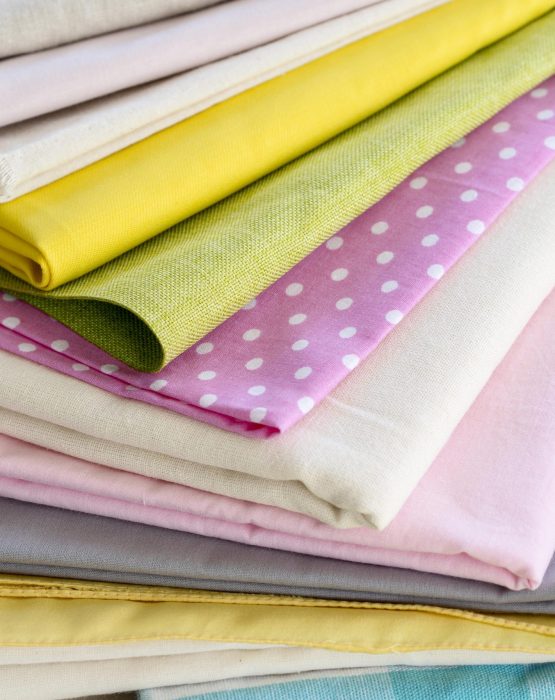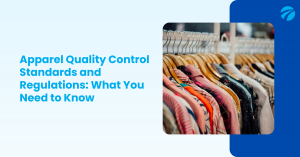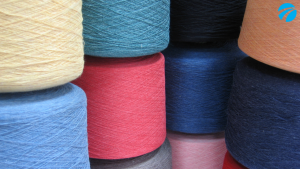Fabric Inspection Expertise - Fabric Quality Control
FABRIC INSPECTION
Fabric Inspection Expertise – Fabric Quality Control
Effective fabric inspection involves a systematic assessment of various aspects of the fabric to verify its compliance with industry standards, durability, and suitability for its intended purpose.
Tetra Inspection is a trusted leader in fabric inspection services. Our highly skilled team of inspectors is well-versed in fabric quality control standards and can assist you in ensuring that your textile products meet the highest standards of quality, safety, and performance. Our inspection process goes beyond surface-level checks and employs advanced techniques and equipment to measure critical parameters.
To ensure your fabric products meet the highest standards, book a comprehensive fabric inspection with Tetra Inspection today
FABRIC QUALITY CONTROL
Key Elements Of Fabric Inspections
Fabric inspections are essential quality control processes in the textile and apparel industry to ensure that the fabric meets the desired standards and specifications. These inspections help identify defects, inconsistencies, and flaws in the fabric, allowing manufacturers to maintain product quality and minimize production issues. Here are the key elements of fabric inspections:
Fabric Sampling: Fabric inspections often involve sampling, where a representative sample of the fabric is selected for evaluation. Sampling methods may include random sampling, systematic sampling, or stratified sampling, depending on the specific requirements of the inspection.
Visual Inspection: Visual inspection is a fundamental aspect of fabric inspections. Trained inspectors carefully examine the fabric for various defects, such as stains, holes, color variations, weave irregularities, and printing errors. The fabric is inspected under appropriate lighting conditions to ensure accurate assessment.
Dimensional Inspection: Fabric dimensions are critical to the quality of the final product. Inspectors measure the width, length, and weight of the fabric to ensure they meet the specified tolerances. Any deviations from the desired dimensions can lead to production problems and product defects.
Color Inspection: Color consistency is crucial, especially in industries like fashion and home textiles. Fabric inspectors compare the actual color of the fabric to the reference color standards to check for any variations. Color inspection may also involve assessing colorfastness, which determines how well the fabric retains its color during laundering or exposure to light.
Defect Classification: Inspectors classify defects based on their type, severity, and location on the fabric. Common defect categories include critical defects that render the fabric unusable, major defects that affect product appearance or performance, and minor defects that have minimal impact on the product.
Documentation: Comprehensive documentation is a key element of fabric inspections. Inspectors record their findings, including defect types, quantities, and locations, in inspection reports. These reports serve as essential records for quality control and can help identify patterns of defects that need corrective action.
Different Types Of Fabrics We Inspect
Tetra Inspection understands that different types of fabrics serve unique purposes and require specific quality control measures. Our expertise extends to a wide range of fabric types, including but not limited to:
Woven Fabrics: Woven fabrics are created by interlacing warp (lengthwise) and weft (widthwise) threads, resulting in a structured and durable textile. Tetra Inspection thoroughly inspects woven fabrics to ensure they meet the desired thread count, weave density, and dimensional stability required for applications such as clothing, upholstery, and home textiles.
Satin Fabrics: Satin fabrics are known for their luxurious and smooth surface texture. Our inspectors pay close attention to satin fabrics, examining their sheen, weave quality, and color consistency to guarantee that they meet the high standards expected in fashion, lingerie, and bedding industries.
Knitted Fabrics: Knitted fabrics are characterized by their flexibility and stretchability, making them suitable for various applications like sportswear, activewear, and casual clothing. Tetra Inspection conducts specialized inspections for knitted fabrics, focusing on stitch consistency, elasticity, and dimensional stability to ensure they meet performance expectations.
Polyester Blends: Polyester blends are popular for their versatility, strength, and wrinkle resistance. Our inspections for polyester blends assess factors such as fabric weight, colorfastness, and durability to ensure that these fabrics meet the stringent requirements of industries like automotive upholstery and outdoor gear.
Cotton Fabrics: Cotton fabrics are widely used in everyday clothing, bed linens, and home textiles due to their breathability and comfort. Tetra Inspection inspects cotton fabrics for attributes such as thread count, color consistency, and tear resistance to guarantee their suitability for diverse applications.
Linen Fabrics: Linen fabrics are appreciated for their natural and breathable properties. Our inspections for linen fabrics focus on texture, weave quality, and shrinkage control, ensuring they meet the expectations of customers in the fashion and home decor sectors.
Specialty Fabrics: Tetra Inspection also specializes in inspecting specialty fabrics such as technical textiles, flame-retardant fabrics, and performance textiles. These fabrics often have unique requirements, and our inspectors are well-equipped to assess their specific characteristics and compliance with industry standards.
Main Tests Performed During Fabric Inspections
Fabric inspection plays a critical role in maintaining the quality and integrity of textile products. Ensuring that fabrics meet specific standards and performance criteria is essential for various industries, from fashion and apparel to automotive and industrial textiles.
Here are main tests performed during a fabric inspection:
Fabric Weight (GSM – Grams per Square Meter): The weight of fabric, measured in GSM, is a crucial indicator of its density and thickness. Different applications require fabrics with specific GSM values. Fabric inspection involves verifying that the fabric’s weight aligns with the intended use, ensuring that it provides the desired level of warmth, durability, or comfort.
Thread Count: Thread count refers to the number of threads per inch in both the warp (lengthwise) and weft (widthwise) directions in a woven fabric. A higher thread count often indicates a finer and more tightly woven fabric. During inspection, the thread count is measured to confirm its compliance with quality standards, especially for products where weave density affects performance or appearance.
Wet & Dry Rub Test: The wet and dry rub tests assess a fabric’s resistance to color transfer or abrasion. These tests involve rubbing a standardized cloth against the fabric to determine if color bleeding or wear occurs.
Greyscale Verification: Fabric colors are evaluated using a greyscale, which measures color fastness to assess how well a fabric retains its color when exposed to various conditions, such as washing or exposure to light. Inspection ensures that the fabric’s color remains consistent and does not fade excessively.
Dimensional Stability: Dimensional stability is crucial to ensure that fabrics maintain their shape and size during use and laundering. Fabric inspection includes measuring the fabric’s shrinkage and expansion characteristics to verify that it remains within acceptable limits.
Tear Resistance Verification: Tear resistance testing evaluates a fabric’s ability to withstand tearing or damage from external forces. Inspection assesses tear resistance to ensure that the fabric can withstand the wear and tear associated with its intended application.
Colour Shades: Fabric inspection involves comparing the actual color shades of the fabric with the specified color standards to ensure that the fabric matches the intended color.
Washing Stability: Washing stability testing determines how well a fabric retains its properties after repeated wash cycles. Inspection checks for any significant changes in fabric quality, color, or texture after washing.
Flame Retardant Properties: In some industries, such as automotive or home textiles, flame retardant properties are essential for safety. Fabric inspection includes assessing flame resistance to ensure compliance with relevant safety standards.
Implementing The 4-Point System In Fabric Inspection
The 4-Point System is a widely recognized and effective method for evaluating fabric defects during inspections. It provides a practical way to classify and quantify defects based on their size and severity. Here’s how to implement the 4-Point System in fabric inspection:
1. Understand the Basics:
Familiarize your inspection team with the 4-Point System’s fundamentals. In this system, defects are categorized into four classes:
- Class 1: Critical defects that render the fabric unusable.
- Class 2: Major defects affecting appearance and performance.
- Class 3: Minor defects with minimal impact.
- Class 4: Negligible defects that are barely noticeable.
3. Sampling:
Decide on a suitable sampling method, such as random or systematic sampling, to select representative portions of the fabric for inspection. Ensure that the sample size is statistically significant to make accurate assessments.
5. Calculate Defect Density:
Calculate the defect density by dividing the total number of defects by the total inspection area. This metric helps assess the fabric’s overall quality.
7. Reporting:
Document your findings thoroughly in the inspection report, including defect types, quantities, and their respective classes. Include photographs to illustrate defect examples.
2. Define Tolerance Levels:
Establish clear tolerance levels for each defect class based on industry standards and product specifications. These thresholds determine whether the fabric passes or fails the inspection.
4. Inspection Process:
During inspection, classify defects into one of the four classes based on their size and impact. Train your inspectors to be consistent and accurate in their assessments. Use appropriate lighting conditions to aid visibility.
6. Compare to Tolerance Levels:
Compare the calculated defect density to the established tolerance levels for each defect class. If the fabric exceeds the tolerance for a specific class, it fails the inspection.
8. Corrective Action:
If defects are identified, work with the manufacturer to implement corrective actions promptly. This may involve reinspection, repair, or replacement of defective fabric.
9. Continuous Improvement:
Use the data collected from fabric inspections to identify trends and patterns in defects. Implement continuous improvement measures to address root causes and prevent future defects.
Defect Rating Formula using the 4-Point System:
Defect Rating = (Total Class 1 Defects * 4) + (Total Class 2 Defects * 3) + (Total Class 3 Defects * 2) + (Total Class 4 Defects * 1)
This formula assigns weighted values to each defect class, allowing you to calculate an overall defect rating for the fabric. The higher the rating, the lower the fabric’s quality.
The Fabric Quality Control Process
The fabric quality control process is a crucial aspect of the manufacturing and distribution of fabric products. It aims to guarantee that fabrics meet the necessary quality standards, performance criteria, and safety regulations. This process involves a meticulous examination of various elements of the fabric products to detect defects, irregularities, or issues that must be rectified before the items are introduced to the market. Let’s explore the different stages of the fabric quality control process:

Before actual production commences, the pre-production inspection takes place. During this phase, inspectors collaborate closely with manufacturers to review design specifications, verify components and materials, and ensure that the production facility possesses the required capabilities to produce high-quality fabric products.
- Raw Materials Verification: Inspectors examine and verify the quality of individual raw materials that will be used in fabric products, such as fibers, dyes, and chemicals.
- Design Specification Review: Thorough scrutiny of design specifications is performed to confirm that they adhere to the desired quality and safety standards.
- Factory Capabilities Evaluation: The inspectors evaluate the manufacturing facility’s capacity, machinery, and workforce to deter
During the production process, in-line inspections occur at various stages to detect and address potential issues in a timely manner.
- Workmanship Quality Assessment: Inspectors closely monitor the fabric production process, including weaving or knitting, dyeing, and finishing, to identify any workmanship defects or deviations from the approved design.
- Defect Detection: Inspectors identify and rectify any defects, irregularities, or deviations from quality standards that may arise during fabric production.
- Implementing Corrective Measures: In the event that issues are identified, inspectors collaborate with manufacturers to promptly implement corrective actions, preventing the production of substandard fabric products.
The final inspection or the Pre-shipement Inspection is conducted once the production of fabric products is completed, and at least 80% of the products are packed and ready for shipment.
- Random Inspection: Inspectors randomly select samples from the batch and subject them to a comprehensive examination to ensure they meet the specified quality benchmarks and comply with safety regulations.
- Functionality Testing: The functionality of fabric features, such as moisture-wicking properties or breathability, is tested to ensure optimal performance.
- Packaging and Loading Oversight: Inspectors supervise the packaging process to verify that the fabric products are adequately protected for transportation. They also ensure proper loading onto shipping containers to prevent damage during transit.
Tetra Inspection: Your Partner In Fabric Inspection Services
Thorough Inspections
Tetra Inspection specializes in conducting meticulous fabric inspections, from pre-production assessments to final random inspections, ensuring that no compromised products go unnoticed.
Personalized Solutions
Recognizing that each company has distinct quality criteria, Tetra Inspection provides customizable inspection solutions tailored to your precise requirements.
Experienced Inspectors
Our team of inspectors possesses in-depth expertise and experience in fabric quality control, guaranteeing a thorough evaluation of every aspect of your textile products.
Prompt Reporting (24 Hours)
Count on Tetra Inspection to deliver punctual and comprehensive inspection reports within 24 hours, enabling you to swiftly address any potential issues that may arise.
Schedule Your Fabric Inspection Today
Count on our team of seasoned experts to conduct meticulous fabric inspection, minimizing risks, and ensuring strict compliance with international standards.
BLOG
Related Articles
shipment, minimizing risks and ensuring compliance with international standards.




